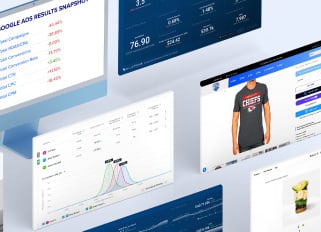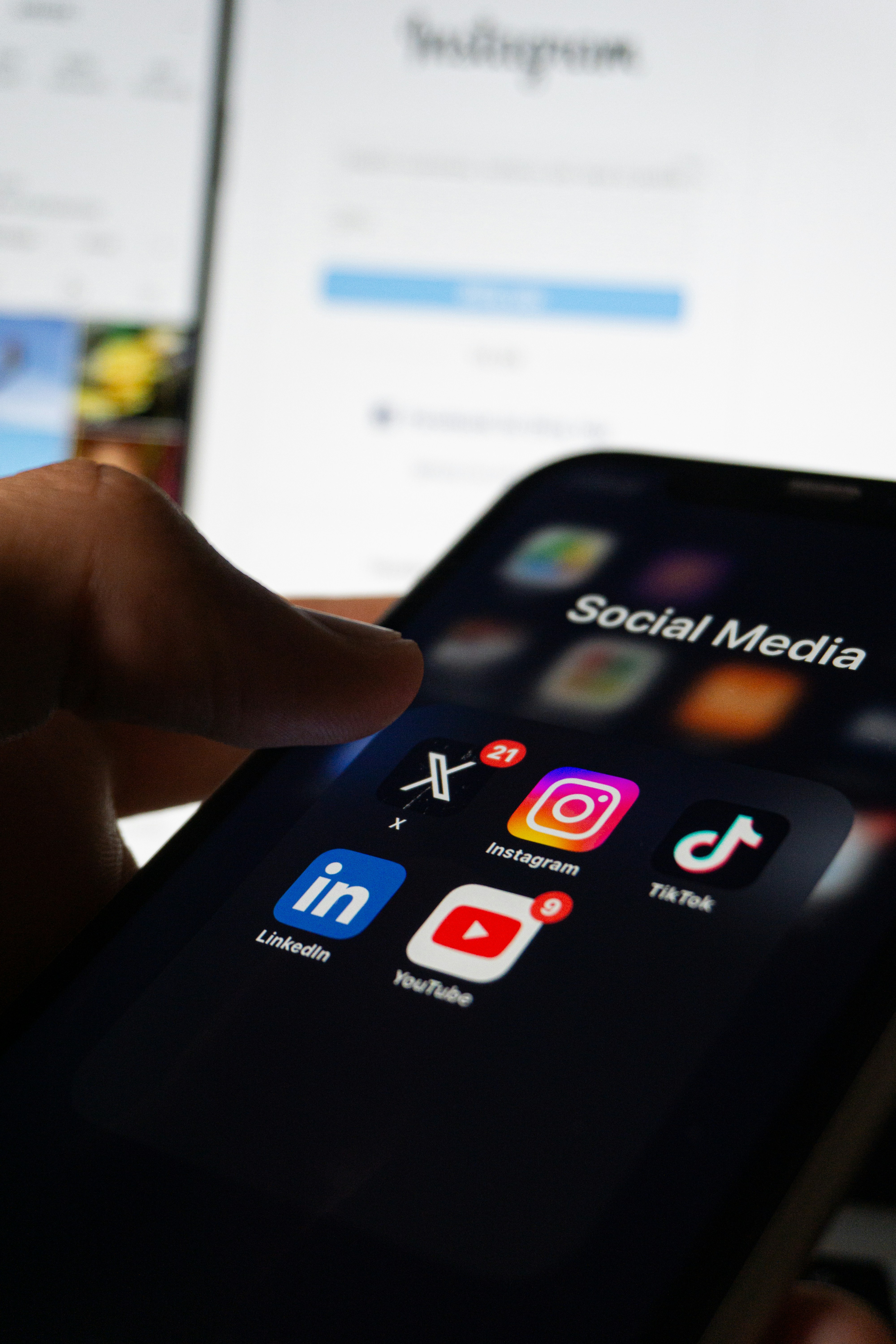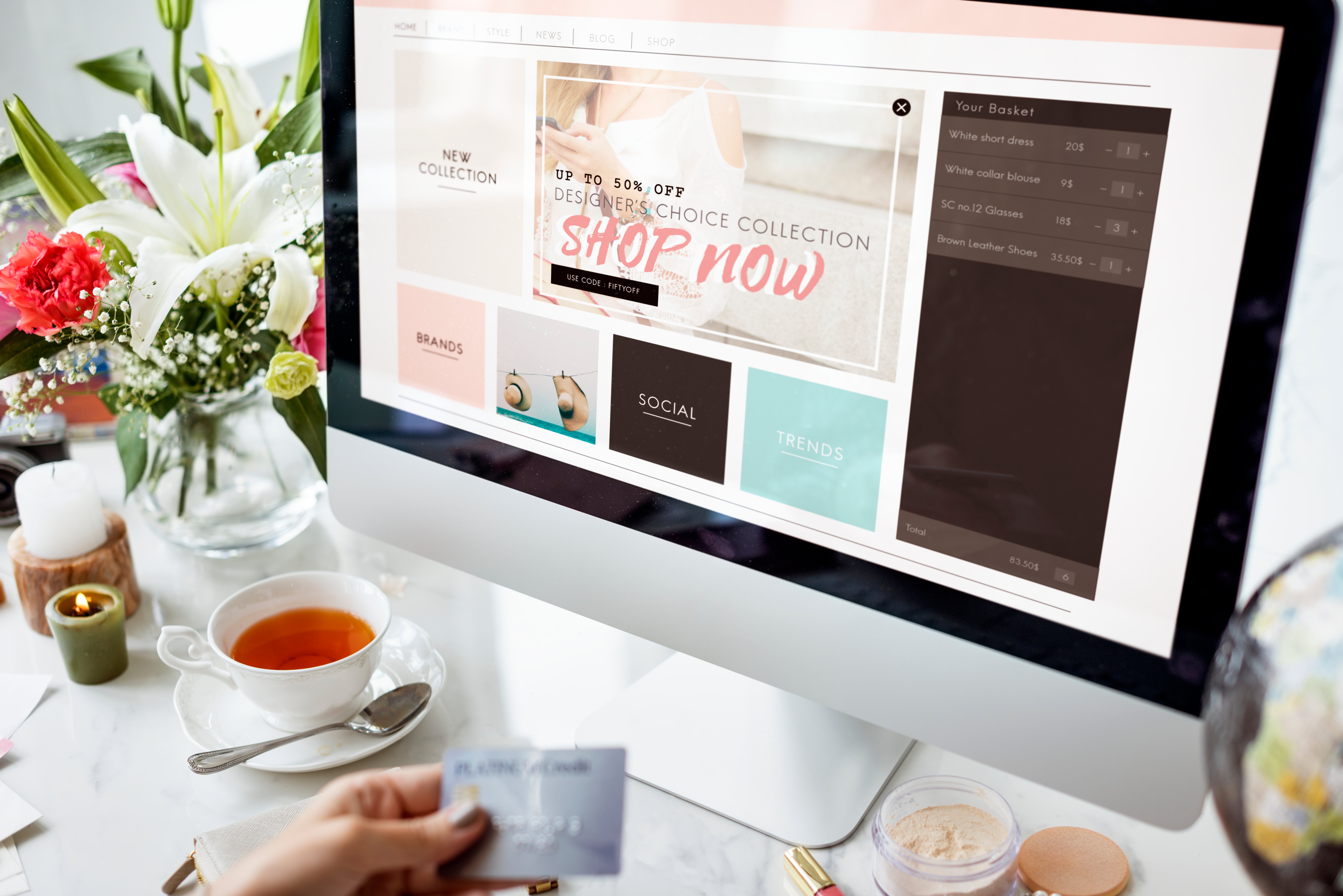11 Strategies to Maximize E-commerce Email Segmentation
Struggling to boost the performance of your e-commerce email marketing? Noticing a dip in open rates and customer engagement lately? It might be time to revisit your email marketing strategy and embrace the power of email segmentation.
Email segmentation has been shown to lead to better engagement with customers through targeted messages tailored toward their interests and needs. In fact, segmented email campaigns have a 50% higher click-through rate (CTR) compared to untargeted campaigns. Therefore, by prioritizing strategies to optimize e-commerce email segmentation, marketers can craft more impactful campaigns that drive stronger results and maximize audience engagement.
In this blog post, we’ll explore the strategies top brands use to maximize their email segmentation efforts. By mastering the core principles of effective segmentation, businesses can unlock powerful techniques to enhance user engagement and elevate their email marketing efforts to success.
What Is Email Segmentation?
At its core, email segmentation involves dividing your email subscriber list into smaller, defined groups based on shared characteristics. This allows you to send content specifically tailored to each group’s needs, behavior, or preferences. Doing so can create a more personalized and relevant experience for your subscribers, ultimately increasing engagement and conversions.
Segmentation can be based on various criteria such as demographic information, purchase history, browsing behavior, interests, or engagement level. With the right tools and data analysis techniques, businesses can identify key segments within their email list and craft targeted messages that speak directly to each group’s unique needs.
.jpg?width=600&height=376&name=hands-of-girl-chatting-with-friends-on-laptop-at-c-2023-11-27-05-06-33-utc%20(1).jpg) Why Should You Segment Your Email Marketing List?
Why Should You Segment Your Email Marketing List?
Segmentation strategy is essential in email marketing campaigns because it ensures that your audience receives relevant and personalized content, ultimately increasing engagement and conversion rates.
By targeting specific groups within your subscriber list, you can deliver messages that align with their unique interests or behaviors, leading to higher open and click-through rates. It also helps reduce unsubscribe rates, as recipients are more likely to find value in tailored content. Additionally, segmentation allows you to optimize your marketing efforts by focusing on different goals, whether nurturing leads, re-engaging inactive users, or driving sales.
Overall, a segmented approach improves the efficiency and effectiveness of your email campaigns, resulting in better ROI and stronger customer relationships.
Strategies for Effective Ecommerce Email Segmentation
Now that we’ve established the importance and benefits of email segmentation, let’s explore 11 strategies businesses can use to maximize its impact:
1. Demographic Segmentation
Demographics are like the ingredients of a cake—you need the right mix to satisfy your audience's sweet tooth. Demographic segmentation allows you to tailor your emails and segment your list based on attributes like age, gender, and location, ensuring your marketing efforts resonate with each group.
For instance:
- Age: Highlight trendy products for younger shoppers or practical solutions for older customers, like a cosmetics line offering products for younger adults or those entering the pre-menopausal stage.
- Location: Share location-specific deals, such as free shipping for local customers or special discounts for international buyers.
- Gender: Deliver personalized recommendations—like men’s sneakers or women’s accessories—to better meet individual preferences.
By dividing your audience into these key segments, you can create targeted campaigns that truly connect.
2. Behavioral Segmentation
Categorize customers based on their past behaviors and actions to boost retention and loyalty. Behavioral segmentation helps businesses identify loyal customers who can be rewarded with perks or incentives, as well as those at risk of churning, allowing for quick intervention to retain them.
For instance, frequent buyers or repeat purchases from the same account can be targeted with exclusive offers to encourage continued engagement. A loyalty program can also reward consistent customers while increasing their potential lifetime value.
On the other hand, inactive customers can be re-engaged by offering coupon codes for their next purchase or a free trial to draw them back.
3. Psychographic Segmentation
This strategy segments audiences based on their interests, values, and attitudes. By understanding the motivations behind customer behavior, brands can create more personalized campaigns and create segments that resonate with their audience on a deeper level.
For instance, a company selling sustainable fashion can segment its audience based on environmental consciousness or ethical consumerism. They can then send targeted emails about their eco-friendly practices or partnerships with ethical suppliers to appeal to these values.
4. Purchase History Segmentation
Businesses can create more effective marketing strategies by understanding how often customers buy, what they buy, when they buy, and why. Analyzing purchase history allows businesses to segment customers based on their buying patterns and tailor campaigns to match their preferences and buying cycles.
For instance, repeat customers can be targeted with personalized emails that show appreciation for their loyalty, such as offering them a discount code to encourage additional purchases. This not only drives sales but also reinforces customer loyalty.
Similarly, segmentation can help identify customers who abandoned their carts. Sending them special offers can nudge them to complete their purchase. Inactive subscribers can also be re-engaged with incentives that align with their previous behaviors. Tailored, targeted campaigns like these ensure customers receive relevant content, increasing the likelihood of a positive response and boosting overall sales.
5. Cart Abandonment Email Segmentation
Cart abandonment is a common issue for ecommerce businesses, but it can be addressed with segmentation. By targeting customers who abandoned their carts with tailored email campaigns, businesses can entice them to return and complete their purchases.
For example, a reminder email can be sent to customers within 24 hours of abandoning their cart, offering them an exclusive discount code or free shipping on their purchase. This personalized approach shows that your business values their interest and encourages them to purchase while also increasing conversions.
6. New vs. Returning Customers Segmentation
Segmenting customers based on whether they are new or returning can help personalize the customer experience and strengthen relationships with each group. New customers may need more information about your products or services, while returning customers may be interested in exclusive offers or updates.
For instance, a welcome email series for new subscribers can introduce them to your brand story, products, and values. On the other hand, returning customers can receive personalized recommendations based on their purchase history or early access to new collections.
 7. Engagement Level Segmentation
7. Engagement Level Segmentation
Not all subscribers engage with your emails in the same way, and understanding their behavior is crucial for tailoring your approach:
- Loyal customers are those who consistently engage with your content, have a high lifetime value, or frequently make purchases. These subscribers are your biggest advocates, and it’s important to nurture that relationship. Show your appreciation by offering them exclusive rewards such as special discounts, loyalty perks, or early access to new products. Personalized thank-you emails or sneak peeks of upcoming launches can go a long way in strengthening their connection with your brand.
- Inactive subscribers may not currently engage with your emails, but they still represent a valuable opportunity. Instead of writing them off, focus on re-engagement strategies. Send them personalized content such as relevant blog posts, exclusive promotional offers, or seasonal discounts tailored to their past interests. A well-crafted reminder email or a "We Miss You!" campaign can help reignite their interest and bring them back into the fold, turning them into active participants once again.
8. Email Preference Segmentation
Allow your customers to tell you exactly what they want from your emails. Send preference-selection emails that empower subscribers to take control of their communication preferences. Let them choose:
- Email frequency: Whether they want updates weekly, bi-weekly, or just once a month.
- Content focus: Are they more interested in product launches, exclusive discounts, or the latest blog updates? Tailor your content to match their preferences.
- Product categories of interest: Do they care more about electronics or home decor? Let them decide which categories matter most to them.
By giving customers these options, you not only reduce the likelihood of unsubscribes but also build stronger, more meaningful relationships.
9. VIP Customer Segmentation
Customer segmentation is not just about understanding your audience—it's also about rewarding your best customers and strengthening their loyalty to your brand. High-value and repeat buyers deserve special attention, so treat them like VIPs to show how much they matter to your business:
- Offer exclusive deals such as early-bird sales, limited-edition product launches, or VIP-only discounts to make them feel prioritized.
- Invite these customers to join loyalty programs that offer meaningful rewards or access to special events like product previews, webinars, or private sales.
- Send personalized thank-you emails acknowledging their continued support and highlighting their importance to your brand, building an emotional connection that keeps them coming back.
By going the extra mile for your VIPs, you're not only showing appreciation but also fostering long-term relationships that drive repeat business.
10. Seasonal Segmentation
Holidays and seasonal trends provide excellent opportunities to segment your email list and create timely, engaging campaigns:
- For winter holidays, consider sending out curated gift guides, exclusive Christmas deals, or holiday-themed content that resonates with the festive spirit. Highlight products perfect for gifting or seasonal must-haves to cater to shoppers looking for last-minute ideas.
- During the summer months, focus on promoting vacation essentials, outdoor gear, or seasonal favorites like summer clothing or skincare products. You can also tie in content about travel tips, recipes for summer gatherings, or fitness for the warmer months.
- Leverage special events like Mother’s Day, Black Friday, or Back-to-School season to create targeted campaigns featuring personalized gift suggestions, limited-time discounts, or helpful guides for parents, students, or holiday shoppers.
By aligning your email content with seasonal trends and events, you ensure your emails feel fresh, relevant, and directly connected to your audience's current needs and interests.
11. Predictive Segmentation
Take your email campaigns to the next level by leveraging predictive data to forecast customer behavior and improve engagement. With AI-powered tools, you can analyze past interactions, purchase history, and browsing patterns to uncover valuable insights. Predictive analytics and behavioral data can help you identify:
- The products customers are most likely to purchase next, based on their preferences and buying trends.
- The optimal times when specific customer segments are most likely to make repeat purchases enable you to target them at just the right moment.
By using predictive segmentation, you can create hyper-personalized email campaigns tailored to individual customer needs. These data-driven recommendations not only enhance the relevance of your messaging but also drive stronger customer loyalty and higher conversion rates.
 Tools and Platforms for E-commerce Email Segmentation Tools
Tools and Platforms for E-commerce Email Segmentation Tools
There are various tools and platforms available to help businesses segment their email lists efficiently. Some popular options include:
- Email Marketing Software: Platforms like Mailchimp, Constant Contact, and ConvertKit offer advanced segmentation features that allow businesses to target specific customer groups based on a variety of criteria. These tools also provide analytics and reporting capabilities to track the success of segmented campaigns.
- Customer Relationship Management (CRM) Systems: CRM systems such as Salesforce, HubSpot, and Zoho offer robust segmentation capabilities alongside other customer management features. They also allow businesses to store detailed customer information and create targeted segments for more personalized communication.
- Marketing Automation Tools: Tools like ActiveCampaign, Marketo, and Klaviyo provide advanced automation features for segmenting email lists based on customer behavior and engagement. These tools also offer personalization options to create highly targeted and relevant campaigns.
- Data Analytics Platforms: Data analytics platforms like Google Analytics and Adobe Analytics can help businesses analyze their website data to identify valuable insights about customer behavior. This information can then be used to create effective segmentation strategies for email marketing.
Measuring Success
As with any marketing strategy, it's crucial to measure the success of your email segmentation efforts and make adjustments as needed. Some key metrics for tracking email segmentation include:
- Open rates: This metric measures the percentage of recipients who open your emails. Segmented campaigns often have higher open rates compared to non-segmented ones, indicating better targeting and relevance for the audience.
- Click-through rates (CTR): This measures the percentage of recipients who click on a link within your email. Similar to open rates, segmented campaigns tend to have higher CTRs than non-segmented ones.
- Conversion rates: The conversion rate measures the percentage of recipients who take a desired action, such as purchasing or filling out a form. Segmented campaigns can drive higher conversion rates by targeting specific customer groups with personalized messaging and offers.
- List growth: A successful email segmentation strategy should increase the size of your email list as more people subscribe to receive targeted content.
To ensure continued success, it's essential to regularly review and analyze these metrics and adjust your segmentation strategy accordingly. Additionally, use A/B testing to test different segment criteria, messaging, and timing to optimize your campaigns for maximum effectiveness.
By continually adapting and improving your email segmentation tactics, you can drive stronger engagement and conversions from your email marketing efforts.
FAQs
What are targeted email campaigns?
Targeted email campaigns are marketing efforts designed to deliver specific and relevant content to a particular group of recipients. By using insights such as customer data and preferences, these campaigns aim to increase engagement and conversions through personalized messaging.
How can segmented campaigns improve email marketing performance?
Segmented campaigns divide your email list into smaller, more focused groups based on shared characteristics like behavior, demographics, or interests. This tailored approach allows you to send more relevant messages, resulting in higher open rates, click-through rates, and overall campaign effectiveness.
What is geographic segmentation, and why does it matter?
Geographic segmentation divides your audience based on their physical location. This approach helps businesses tailor content that resonates with specific regions, accounting for cultural differences, time zones, and local preferences. It is especially valuable for businesses with location-sensitive products or services.
How does the use of customer data impact email campaigns?
Customer data is essential for creating personalized and relevant email campaigns. By analyzing data such as purchase history, website behavior, and preferences, marketers can craft messages that align with specific customer needs, improving the overall user experience and campaign success.
Why is selecting the right email service provider important?
An email service provider (ESP) plays a critical role in the execution of your campaigns. The right ESP enables efficient management of your email lists, offers powerful segmentation tools, ensures reliable delivery, and provides analytics to measure the performance of your targeted and segmented campaigns. Choose an ESP that aligns with your business goals and technical needs for maximum results.
Conclusion
Email segmentation is a game-changer for businesses and marketers, offering a powerful way to connect with customers more effectively. By implementing smart email marketing segmentation strategies, businesses can deliver tailored content to their audience, significantly boosting engagement and success rates. For e-commerce brands, a well-crafted email segmentation strategy ensures marketing campaigns reach the right audience, driving higher conversions and better results.
Looking to elevate your email marketing game? Explore our e-commerce email marketing services at Bluetuskr, a leading e-commerce marketing agency. Let's help you grow smarter!
Connect With Us
Recent Post

.png)





Tell us what you think!